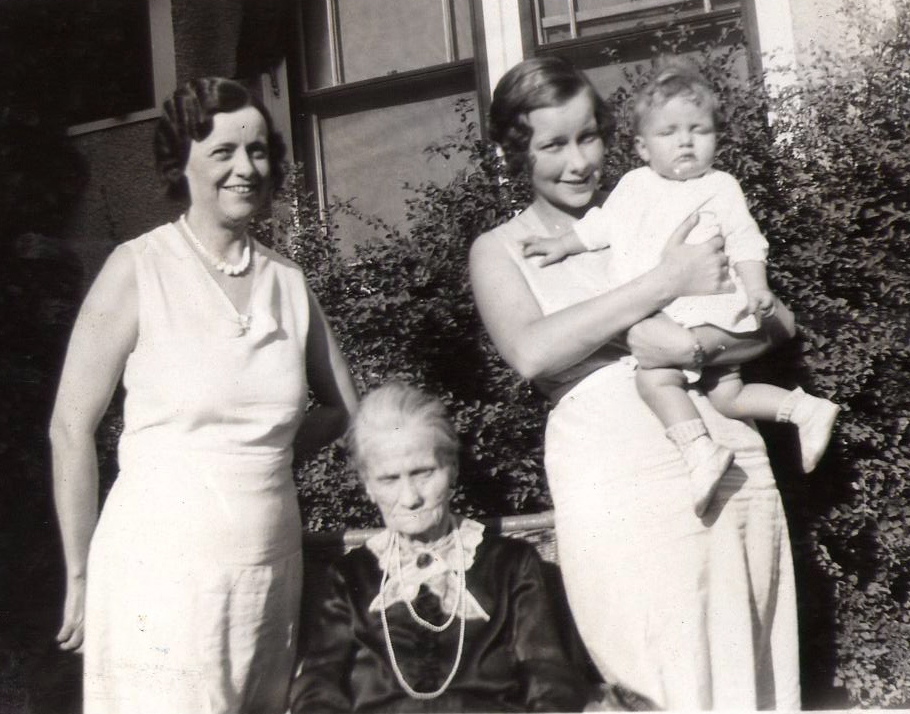|
Countess Caroline Of Nassau-Saarbrücken
Countess Caroline of Nassau-Saarbrücken (12 August 1704 – 25 March 1774) was Countess Palatine of Zweibrücken by marriage. Biography She was the daughter of Count Louis Crato of Nassau-Saarbrücken (died 1713) and Countess Philippine Henriette of Hohenlohe (1679–1751). On 21 September 1719, at the age of 15, she married her 44-year-old godfather, Christian III of Zweibrücken. The wedding took place at Castle Lorenzen in Nassau. This marriage produced four children: * Caroline Henriette Christine (1721–1774), called "the great landgravine" : married to Landgrave Louis IX of Hesse-Darmstadt * Christian IV (1722–1775), Count Palatine and Duke of Palatinate-Zweibrücken * Frederick Michael (1724–1767), Count Palatine of Birkenfeld * Christiane Henriette (1725–1816), Countess Palatine of Zweibrücken-Birkenfeld and by marriage Princess of Waldeck-Pyrmont When Christian III died in 1735, Caroline took over the Regency for five years, with the consent of ... [...More Info...] [...Related Items...] OR: [Wikipedia] [Google] [Baidu] |
House Of Nassau
The House of Nassau is the name of a European aristocratic dynasty. The name originated with a lordship associated with Nassau Castle, which is located in what is now Nassau, Rhineland-Palatinate, Nassau in Rhineland-Palatinate, Germany. With the fall of the Hohenstaufen dynasty in the first half of the 13th century, royal power within Franconia evaporated and the former stem duchy fragmented into separate independent states. Nassau emerged as one of those independent states as part of the Holy Roman Empire. The lords of Nassau were originally titled "Counts of Nassau", subject only to the Holy Roman Emperor, Emperor, and then elevated to princely rank as "Princely Counts". Early on, the family divided into two main branches – the elder (Walramian) branch, which gave rise to the German king Adolf, King of the Romans, Adolf, and the younger (Ottonian) branch, which gave rise to the Prince of Orange, Princes of Orange and the King of the Netherlands, monarchs of the Netherlands. ... [...More Info...] [...Related Items...] OR: [Wikipedia] [Google] [Baidu] |
Waldeck-Pyrmont
The County of Waldeck (later the Principality of Waldeck and Principality of Waldeck and Pyrmont) was a state of the Holy Roman Empire and its successors from the late 12th century until 1929. In 1349 the county gained Imperial immediacy and in 1712 was raised to the rank of principality. After the dissolution of the Holy Roman Empire in 1806 it was a constituent state of its successors: the Confederation of the Rhine, the German Confederation, the North German Confederation, and the German Empire. After the abolition of the monarchy in 1918, the renamed Free State of Waldeck-Pyrmont became a component of the Weimar Republic until divided between Hannover and other Prussian provinces in 1929. It comprised territories in present-day Hesse and Lower Saxony (Germany). History The noble family of the and the later Princes of Waldeck and Pyrmont were male line descendants of the (based at Schwalenberg Castle), ultimately descendent from (reigned 1127–1136/7). Waldeck Cas ... [...More Info...] [...Related Items...] OR: [Wikipedia] [Google] [Baidu] |
Daughters Of Counts
A daughter is a female offspring; a girl or a woman in relation to her parents. Daughterhood is the state, condition or quality of being someone's daughter. The male counterpart is a son. Analogously the name is used in several areas to show relations between groups or elements. From biological perspective, a daughter is a first degree relative. The word daughter also has several other connotations attached to it, one of these being used in reference to a female descendant or consanguinity. It can also be used as a term of endearment coming from an elder. In patriarchal societies, daughters often have different or lesser familial rights than sons. A family may prefer to have sons rather than daughters and subject daughters to female infanticide. In some societies, it is the custom for a daughter to be 'sold' to her husband, who must pay a bride price. The reverse of this custom, where the parents pay the husband a sum of money to compensate for the financial burden of the woman ... [...More Info...] [...Related Items...] OR: [Wikipedia] [Google] [Baidu] |
18th-century Regents
The 18th century lasted from 1 January 1701 (represented by the Roman numerals MDCCI) to 31 December 1800 (MDCCC). During the 18th century, elements of Enlightenment thinking culminated in the Atlantic Revolutions. Revolutions began to challenge the legitimacy of monarchical and aristocratic power structures. The Industrial Revolution began mid-century, leading to radical changes in human society and the environment. The European colonization of the Americas and other parts of the world intensified and associated mass migrations of people grew in size as part of the Age of Sail. During the century, slave trading expanded across the shores of the Atlantic Ocean, while declining in Russia and China. Western historians have occasionally defined the 18th century otherwise for the purposes of their work. For example, the "short" 18th century may be defined as 1715–1789, denoting the period of time between the death of Louis XIV of France and the start of the French Revolution ... [...More Info...] [...Related Items...] OR: [Wikipedia] [Google] [Baidu] |
Countesses Palatine Of Zweibrücken
Count (feminine: countess) is a historical title of nobility in certain European countries, varying in relative status, generally of middling rank in the hierarchy of nobility. Pine, L. G. ''Titles: How the King Became His Majesty''. New York: Barnes & Noble, 1992. p. 73. . Especially in earlier medieval periods the term often implied not only a certain status, but also that the ''count'' had specific responsibilities or offices. The etymologically related English term "county" denoted the territories associated with some countships, but not all. The title of ''count'' is typically not used in England or English-speaking countries, and the term ''earl'' is used instead. A female holder of the title is still referred to as a ''countess'', however. Origin of the term The word ''count'' came into English from the French ', itself from Latin '—in its accusative form ''comitem''. It meant "companion" or "attendant", and as a title it indicated that someone was delegated to re ... [...More Info...] [...Related Items...] OR: [Wikipedia] [Google] [Baidu] |
1774 Deaths
Events January–March * January 21 – Mustafa III, List of Ottoman Sultans, Sultan of the Ottoman Empire, dies and is succeeded by his brother Abdul Hamid I. * January 27 ** An angry crowd in Boston, Massachusetts seizes, tars, and feathers British customs collector and John Malcolm (Loyalist), Loyalist John Malcolm, for striking a boy and a shoemaker, George Robert Twelves Hewes, George Hewes, with his cane. ** British industrialist John Wilkinson (industrialist), John Wilkinson patents a method for Boring (manufacturing), boring cannon from the solid, subsequently utilised for accurate boring of steam engine cylinders. * February 3 – The Privy Council of the United Kingdom, Privy Council of Great Britain, as advisors to King George III, votes for the King's abolition of free land grants of North American lands. Henceforward, land is to be sold at auction to the highest bidder. * February 6 – The Parlement of Paris votes a sentence of civil degradation, deprivin ... [...More Info...] [...Related Items...] OR: [Wikipedia] [Google] [Baidu] |
1704 Births
In the Swedish calendar it was a leap year starting on Friday, one day ahead of the Julian and ten days behind the Gregorian calendar. Events January–March * January 7 – Partial solar eclipse, Solar Saros 146, is visible in Antarctica. * January 25–January 26, 26 – Apalachee massacre: English colonists from the Province of Carolina, and their native allies, stage a series of brutal raids against a largely pacific population of Apalachee, in Spanish Florida. * February 28 – Establishment of the first school open to African-Americans in New York City by Frenchman Elias Neau. * February 29 – Raid on Deerfield (Queen Anne's War): French Canadians and Indigenous peoples in the United States, Native Americans sack Deerfield, Massachusetts, killing over 50 English colonists. * February – In America, Mardi Gras is celebrated with the ''Mardi Gras in Mobile, Masque de la Mobile'' in the capital of Louisiana (New France), Mobile, Alabama. * ... [...More Info...] [...Related Items...] OR: [Wikipedia] [Google] [Baidu] |
Bergzabern
Bad Bergzabern () is a municipality in the Südliche Weinstraße district, on the German Wine Route in Rhineland-Palatinate, Germany. It is situated near the border with France, on the south-eastern edge of the Palatinate forest, approximately southwest of Landau. Bad Bergzabern is the seat of the ''Verbandsgemeinde'' ("collective municipality") Bad Bergzabern. Bad Bergzabern has a tradition as a holiday destination and contains various half-timbered houses from the seventeenth and eighteenth centuries. Of particular note from an earlier century is the Gasthaus Zum Engel (1579), which has been described as the most beautiful renaissance building in the entire region. History In the sixteenth century local scholars were keen to assert that the town had been founded under the Romans, and sources from this period refer to the medieval Latin name as ''Tabernae Montanae'' (trans. " taverns of the mountains"). Although the area was indeed under the control of the Roman empire ar ... [...More Info...] [...Related Items...] OR: [Wikipedia] [Google] [Baidu] |
Charles VI, Holy Roman Emperor
Charles VI (; ; 1 October 1685 – 20 October 1740) was Holy Roman Emperor and ruler of the Austrian Habsburg monarchy from 1711 until his death, succeeding his elder brother, Joseph I, Holy Roman Emperor, Joseph I. He unsuccessfully War of the Spanish Succession, claimed the throne of Spain following the death of his relative, Charles II of Spain, Charles II. In 1708, he married Elisabeth Christine of Brunswick-Wolfenbüttel, by whom he had his four children: Archduke Leopold Johann of Austria, Leopold Johann (who died in infancy), Maria Theresa, Archduchess Maria Anna of Austria (governor), Maria Anna (Governess of the Austrian Netherlands), and Maria Amalia (who also died in infancy). Four years before the birth of Maria Theresa, faced with his lack of male heirs, Charles provided for a male-line succession failure with the Pragmatic Sanction of 1713. The Emperor favoured his own daughters over those of his elder brother and predecessor, Joseph I, in the succession, ... [...More Info...] [...Related Items...] OR: [Wikipedia] [Google] [Baidu] |
Regent
In a monarchy, a regent () is a person appointed to govern a state because the actual monarch is a minor, absent, incapacitated or unable to discharge their powers and duties, or the throne is vacant and a new monarch has not yet been determined. The rule of a regent or regents is called a regency. A regent or regency council may be formed ''ad hoc'' or in accordance with a constitutional rule. ''Regent'' is sometimes a formal title granted to a monarch's most trusted advisor or personal assistant. If the regent is holding the position due to their being in the line of succession, the compound term '' prince regent'' is often used; if the regent of a minor is their mother, and she is wife or widow of the king, she would be referred to as ''queen regent''. If the formally appointed regent is unavailable or cannot serve on a temporary basis, a may be appointed to fill the gap. In a monarchy, a regent usually governs due to one of these reasons, but may also be elected to ... [...More Info...] [...Related Items...] OR: [Wikipedia] [Google] [Baidu] |







